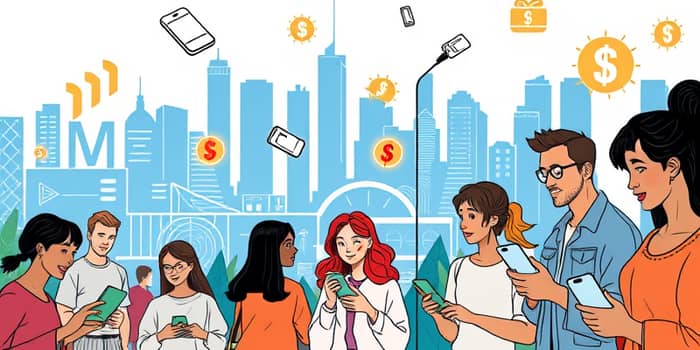
In an era defined by speed and connectivity, digital wallets have emerged as a cornerstone of modern finance. These intuitive platforms are reshaping how we pay, save, and plan, offering a blend of convenience and security once unimaginable.
Digital wallets, also known as e-wallets or mobile wallets, are software-based applications that securely store payment, identification, and loyalty data. From credit and debit cards to cryptocurrencies and QR codes, these wallets enable seamless transactions, both online and in person.
The global digital wallet user base soared to over 5.2 billion active users in 2025, representing more than 60% of all e-commerce transactions. The mobile payment market reached $1.65 trillion in 2023 and is on track to hit $2.5 trillion by 2025.
Last year, digital wallet transactions surpassed $10 trillion worldwide, and this figure is forecasted to exceed $17 trillion by 2029, driven by rapid smartphone adoption and evolving consumer expectations.
Adoption rates vary significantly across regions, reflecting diverse economic landscapes and payment infrastructures.
From China’s near-universal usage to Africa’s mobile-first banking revolution, digital wallets are democratizing access to financial services worldwide.
Apple Pay dominates with a 92% U.S. market share of mobile wallet transactions, handling over $10 trillion annually. Google Pay, PayPal, Alipay, WeChat Pay, and M-Pesa are other heavyweights, each tailoring features to regional needs and consumer habits.
Digital wallet users are not just more connected—they spend more. On average, U.S. mobile wallet users spent $3,693 in 2024, an 87% increase since 2020. Globally, users spend 12.8% more than debit card users and 51.1% more than cash users, illustrating heightened engagement and purchasing power.
Technological breakthroughs are propelling digital wallets into new realms of functionality and trust:
From consumers to merchants, the advantages are compelling:
Despite tremendous growth, hurdles remain:
The trajectory is clear: by 2030, we expect over 5 billion global wallet users and 750 million Apple Pay customers. Open banking and “super app” ecosystems will weave payments, shopping, and services into unified platforms, making wallets central to broader super app ecosystems.
As technology evolves, digital wallets will continue to break down financial barriers, foster inclusion, and empower users with unprecedented control over their money. Now is the time to embrace this transformation and step into the future of effortless, secure, and connected finance.
References













